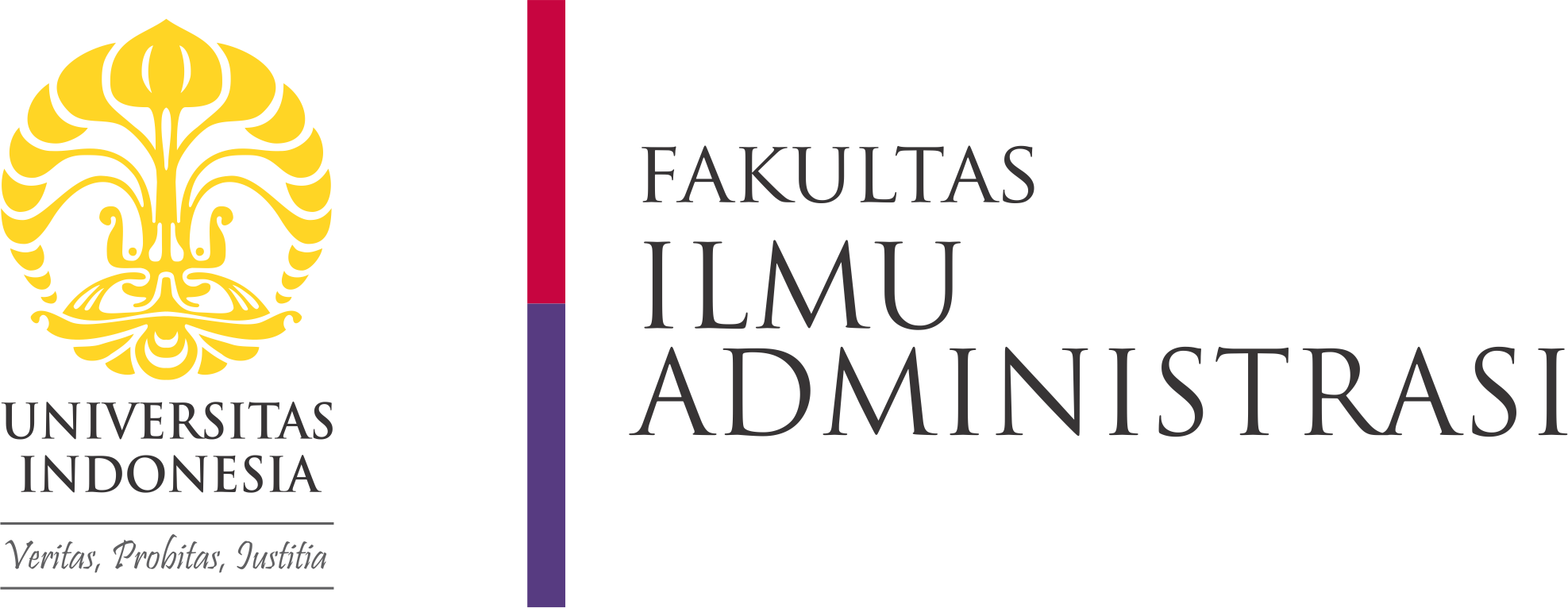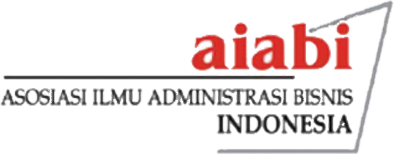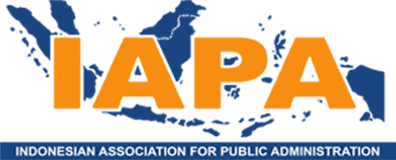Creative Commons License

This work is licensed under a Creative Commons Attribution-Share Alike 4.0 International License.
Abstract
The word “governance” has gained extensive usage in the business sector. Thus, “information governance” is not a new addition to the lexicon. This study aims to examine English articles on information governance written by international academics and published in Scopus-indexed journals by adopting bibliometric and content analyses. We conducted the content analysis using the VOSviewer program, which allows us to display keyword co-occurrence and bibliographic coupling of nations and sources. We identified 587 publications on information governance spanning the last 30 years. The most prolific publication platform is the Journal of the American Health Information Management Association (n=32). The most productive nation is the United Kingdom (n=206). Citations reveal that the most significant authors and periodicals are Michie S. et al. (n=352) and the Journal of Medical Internet Research (n=552), respectively. The search terms for information governance (e.g., information governance, humans, and human) in this study generate six clusters. Research on information governance has experienced dramatic growth over the past three decades, which is evident from a worldwide viewpoint. Publications in European-published journals are observed. Consequently, Asia has to engage more actively in the study of this subject.
References
Akhavan, P., Ebrahim, N. A., Fetrati, M. A., & Pezeshkan, A. (2016). Major trends in knowledge management research: a bibliometric study. Scientometrics, 107(3), 1249–1264. https://doi.org/10.1007/s11192-016-1938-x
Bradley, A., Li, H., Lark, R., & Dunn, S. (2016). BIM for infrastructure: An overall review and constructor perspective. Automation in Construction, 71, 139–152. https://doi.org/10.1016/j.autcon.2016.08.019
Council for Medical Sciences of the Royal Netherlands Academy of Arts and Sciences. The societal impact of applied health research. Towards a quality assessment system. ISBN 90-6984-360-9, 5-49. Amsterdam, KNAW Koninklijke Nederlandse Akademie van Wetenschappen, 2002.
Davenport, T. H., & Prusak, L. (1997). Information ecology: Mastering the information and knowledge environment. New York: Oxford University Press.
De Haes, S., and Van Grembergen, W. An exploratory study into IT governance implementations and its impact on business/IT alignment. Information Systems Management, 26, 2 (2009), 123–137.
Devlin, A. M., McGee-Lennon, M., O’Donnell, C. A., Bouamrane, M. M., Agbakoba, R., O’Connor, S., Grieve, E., Finch, T., Wyke, S., Watson, N., Browne, S., & Mair, F. S. (2016). Delivering digital health and well-being at scale: Lessons learned during the implementation of the dallas program in the United Kingdom. Journal of the American Medical Informatics Association, 23(1), 48–59. https://doi.org/10.1093/jamia/ocv097
Di Stefano, G., Verona, G., & Peteraf, M. (2010). Dynamic capabilities deconstructed: A bibliographic investigation into the origins, development, and future directions of the research domain. Industrial and Corporate Change, 19(4), 1187-1204.
Donaldson, A., &Walker, P. (2004). Information governance—A view from the NHS. International Journal of Medical Informatics, 73, 281–284.
Economist Intelligence Unit. (2008). The future of enterprise information governance. London: The Economist Intelligence Unit Limited.
Eells, R.S.F. The Meaning of Modern Business: An Introduction to the Philosophy of Large Corporate Enterprise. New York: Columbia University Press, 1960.
Fagerberg, J., & Verspagen, B. (2009). Innovation studies—The emerging structure of a new scientific field. Research Policy, 38(2), 218-233. doi:10.1016/j.respol.2008.12.006
Fagerberg, J., Fosaas, M., & Sapprasert, K. (2012). Innovation: Exploring the knowledge base. Research Policy, 41(7), 1132-1153. doi:10.1016/j.respol.2012.03.008
Fama, E. F., & Jensen, M. C. (1983). Separation of ownership and control. Journal of Law and Economics, 26, 301–325.
Ford, D. V., Jones, K. H., Verplancke, J. P., Lyons, R. A., John, G., Brown, G., Brooks, C. J., Thompson, S., Bodger, O., Couch, T., & Leake, K. (2009). The SAIL Databank: Building a national architecture for e-health research and evaluation. BMC Health Services Research, 9, 1–12. https://doi.org/10.1186/1472-6963-9-157
Gartner, W. B., Davidsson, P., & Zahra, S. A. (2006). Are you talking to me? The nature of community in entrepreneurship scholarship. Entrepreneurship Theory and Practice, 30(3), 321-331.
Glänzel, W. & U. Schoepflin: A bibliometric study of reference literature in the sciences and social sciences. Information Processing & Management 1999, 35, 31–44.
Glover, G., Williams, R., Heslop, P., Oyinlola, J., & Grey, J. (2017). Mortality in people with intellectual disabilities in England. Journal of Intellectual Disability Research, 61(1), 62–74. https://doi.org/10.1111/jir.12314
Henderson, J. C., & Venkatraman, N. (1993). Strategic alignment: Leveraging information technology for transforming organizations. IBM Systems Journal, 32(1), 4–16.
Henderson, J.C., and Venkatraman, N. Strategic alignment: Leveraging information technology for transforming organizations. IBM Systems Journal, 32, 1 (1993), 4–16.
Hirschheim, R., & Sabherwal, R. (2001). Detours in the path toward strategic information systems alignment. California Management Review, 44(1), 87–108.
Hood, W. W. & C. S. Wilson: Informetric studies using databases: opportunities and challenges. Scientometrics 2003, 58, 587–608
Huckvale, K., Morrison, C., Ouyang, J., Ghaghda, A., & Car, J. (2015). The evolution of mobile apps for asthma: An updated systematic assessment of content and tools. BMC Medicine, 13(1), 1–15. https://doi.org/10.1186/s12916-015-0303-x
Huizing, A. (2007). The value of a rose: Rising above objectivism and subjectivism. In A. Huizing, & E. de Vries (Eds.), Information management: Setting the scene. London: Elsevier.
Huizing, A., & Bouman, W. (2002). Knowledge and learning, markets and organizations: Managing the information transaction space. In C. W. Choo, & N. Bontis (Eds.), The strategic management of intellectual capital and organizational knowledge (pp. 185–206). New York: Oxford University Press.
IT Governance Institute. (2003). Board briefing on IT governance (2nd Ed.). Retrieved from: http://www.isaca.org/Content/ContentGroups/ITGI3/Resources1/Board Briefing on IT Governance/26904 Board Briefing final.pdf
Kessler, M. M. (1963). Bibliographic coupling between scientific papers. American Documentation, 14(1), 10-25. doi:10.1002/asi.5090140103.
Klein, G., Moon, B., & Hoffman. (2006). Making sense of sense making 1: Alternative perspectives. IEEE Intelligent Systems, 21(4), 70–73.
Kooiman, J. (2003). Governing as governance. London: Sage publications. (2005). Kooiman, J. (Ed.), Fish for life, interactive governance for fisheries Amsterdam: Amsterdam University Press.
Kooper, M. N., Maes, R., & Lindgreen, E. E. O. R. (2011). On the governance of information: Introducing a new concept of governance to support the management of information. International Journal of Information Management, 31(3), 195–200. https://doi.org/10.1016/j.ijinfomgt.2010.05.009
Kostoff, R. N.: The use and misuse of citation analysis in research evaluation – Comments on theories of citation? Scientometrics 1998, 43, 27–43.
Landstro¨m, H., Harirchi, G., & A˚stro¨m, F. (2012). Entrepreneurship: Exploring the knowledge base. Research Policy, 41(7), 1154-1181.
Lee, D. (2020). Bibliometric Analysis of Korean Journals in Arts and Kinesiology – from the Perspective of Authorship. Journal of Information Science Theory and Practice, 8(3), 15–29. https://doi.org/10.1633/JISTaP.2020.8.3.2
Lyons, R. A., Jones, K. H., John, G., Brooks, C. J., Verplancke, J. P., Ford, D. V., Brown, G., & Leake, K. (2009). The SAIL databank: Linking multiple health and social care datasets. BMC Medical Informatics and Decision Making, 9(1), 1–8. https://doi.org/10.1186/1472-6947-9-3
Mifrah, S. (2020). Toward a Semantic Graph of Scientific Publications: A Bibliometric Study. International Journal of Advanced Trends in Computer Science and Engineering, 9(3), 3323–3330. https://doi.org/10.30534/ijatcse/2020/129932020
Nederhof, A. J. & R. A. Zwaan: Quality judgments of journals as indicators of research performance in the humanities and the social and behavioral sciences. J Amer. Soc. Inform. Sci. 1991, 42, 332–340.
Nederhof, A. J., M. Luwel & H. F. Moed: Assessing the quality of scholarly journals in linguistics: An alternative to citation-based Journal Impact Factors. Scientometrics 2001, 51, 241–265.
Nederhof, A. J., R. A. Zwaan, R. E. De Bruin & P. J. Dekker: Assessing the usefulness of bibliometric indicators for the humanities and the social and behavioural sciences: A comparative Study. Scientometrics 1989, 15, 423–435.
Nerur, S. P., Rasheed, A. A., & Natarajan, V. (2008). The intellectual structure of the strategic management field: An author co-citation analysis. Strategic Management Journal, 29(3), 319-336. doi:10.1002/smj.659
Omoregbe, O., Mustapha, A. N., Steinberger-Wilckens, R., El-Kharouf, A., & Onyeaka, H. (2020). Carbon capture technologies for climate change mitigation: A bibliometric analysis of the scientific discourse during 1998–2018. Energy Reports, 6, 1200–1212. https://doi.org/10.1016/j.egyr.2020.05.003
Pijpers, G. (2006). Information usage behavior theory and practice. Den Haag: Academic Service.
Proceedings of the Workshop on ‘‘Bibliometric Standards’’. Satellite event to the 5th International Conference on Scientometrics and Informetrics. Rosary College, River Forest, Illinois (USA) Sunday, June 11, 1995. W. Gla¨nzel, J. S. Katz & H. Moed. Scientometrics, Volume 35, Issue 2, 1996 , 166–290. 1996. Budapest, Akademiai Kiado
Putera, P. B., Suryanto, S., Ningrum, S., & Widianingsih, I. (2020). A bibliometric analysis of articles on innovation systems in Scopus journals written by authors from Indonesia, Singapore, and Malaysia. Science Editing, 7(2), 177–183. https://doi.org/10.6087/KCSE.214
Rafaeli, S. (2003). Experimental investigation of the subjective value of information in trading. Journal of the Association for Information Systems, 4, 119–139.
Raghupathi, W. Corporate governance of IT: A framework for development. Communications of the ACM, 50, 8 (2007), 94–99.
Ramos-Rodriguez, A. R., & Ruiz-Navarro, J. (2004). Changes in the intellectual structure of strategic management research: A bibliometric study of the Strategic Management Journal, 1980-2000. Strategic Management Journal, 25(10), 981-1004. doi:10.1002/smj.397
Sambamurthy, V., and Zmud, R. Arrangements for information technology governance : A theory of multiple contingencies. MIS Quarterly, 23, 2 (1999), 261–290.
Sambamurthy, V., and Zmud, R. The organizing logic for an enterprise’s IT activities in the digital era: A prognosis of practice and a call for research. Information Systems Research, 11, 2 (2000), 105–114.
Saravanan, G., & Dominic, J. (2014). A Ten-year Bibliometric Analysis of Research Trends in Three Leading Ecology Journals during 2003-2012. Journal of Information Science Theory and Practice, 2(3), 40–54. https://doi.org/10.1633/jistap.2014.2.3.4
Schildt, H. A., Zahra, S. A., & Sillanpaa, A. (2006). Scholarly communities in entrepreneurship research: A co-citation analysis. Entrepreneurship Theory and Practice, 30(3), 399-415.
Shapiro, C., & Varian, H. R. (1999). Information rules. Boston: Harvard Business School Press.
Small, H. (1973). Co-citation in the scientific literature: A new measure of the relationship between two documents. Journal of the American Society for Information Science, 24(4), 265-269.
Tallon, P. P. (2013). Corporate governance of big data: Perspectives on value, risk, and cost. Computer, 46(6), 32–38. https://doi.org/10.1109/MC.2013.155
Tallon, P. P., Ramirez, R. V., & Short, J. E. (2013). The information artifact in IT governance: Toward a theory of information governance. Journal of Management Information Systems, 30(3), 141–178. https://doi.org/10.2753/MIS0742-1222300306
Tallon, P.P. A process-oriented perspective on the alignment of information technology and business strategy. Journal of Management Information Systems, 24, 3 (Winter 2007–8), 231–272.
Tallon, P.P. Value chain linkages and the spillover effects of strategic IT alignment: A process-level view. Journal of Management Information Systems, 28, 3 (Winter 2011–12), 9–44.
Van Grembergen, W. (2004). Strategies for information technology governance. Hershey: IDEA Group Publishing.
van Raan A. F. J.: Measuring science. Capita selecta of current main issues. In: Handbook of quantitative science and technology research. The use of publication and patent statistics in studies of S&T systems. Eds.: Moed, H. F., W. Glänzel & U. Schmock. Kluwer Academic Publishers, Dordrecht/Boston/London, 2004, pp. 19–50.
Wallin, J. A.: Forskningen ved Det Sundhedsvidenskabelige Fakultet Syddansk Universitet 1998–2000. En bibliometrisk undersøgelse. Det Sundhedsvidenskabelige Fakultet. Syddansk Universitet, Odense, Denmark, 2004.
Wallin, J. A.: Forskningen ved Sundhedsvidenskab i Odense 1966– 1997. En bibliometrisk undersøgelse. Det Sundhedsvidenskabelige Fakultet. Syddansk Universitet, Odense, Denmark. 1999.
Weill, P., & Ross, J. W. (2004). IT governance—How top performers manage IT decision rights for superior results. Boston: Harvard Business School Press.
Weill, P., and Ross, J.W. IT Governance. Boston: Harvard Business School Press, 2004.
Willson, P., and Pollard, C. Exploring IT governance in theory and practice in a large multinational organisation in Australia. Information Systems Management, 26, 2 (2009), 98–109.
Xue, L.; Ray, G.; and Gu, B. Environmental uncertainty and IT infrastructure governance: A curvilinear relationship. Information Systems Research, 22, 2 (2011), 389–399.
Xue, Y.; Liang, H.; and Boulton, W. Information technology governance in information technology investment decision processes: The impact of investment characteristics, external environment, and internal context. MIS Quarterly, 32, 1 (2008), 67–96.
First Page
157
Last Page
170
Recommended Citation
Muhtar, Entang Adhy; Candradewini, Candradewini; Rusli, Budiman; Karlina, Nina; and Muharam, Riki Satia
(2023)
"The Global Research Trend in Information Governance,"
BISNIS & BIROKRASI: Jurnal Ilmu Administrasi dan Organisasi: Vol. 30:
No.
3, Article 4.
DOI: 10.20476/jbb.v30i3.1400
Available at:
https://scholarhub.ui.ac.id/jbb/vol30/iss3/4






